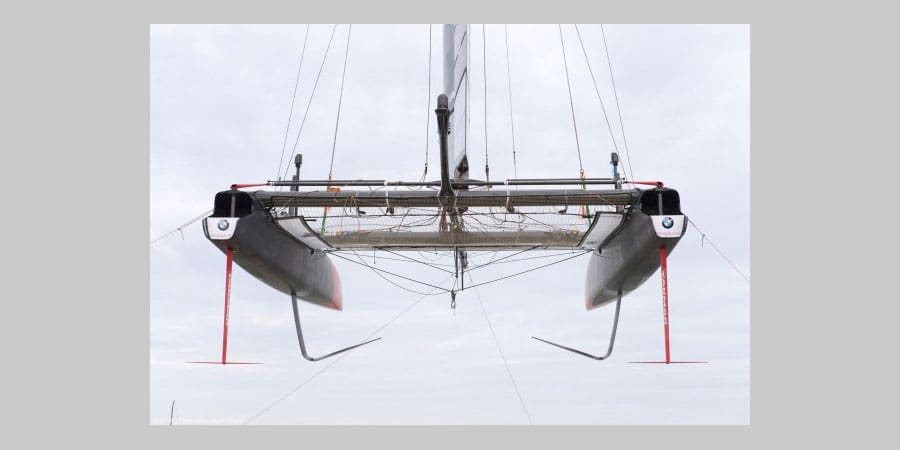2017 is the year of the 35th America’s Cup. The oldest trophy in international sport and a competition that will see six teams fighting it out on Bermuda’s Great Sound. Over 2015 and 2016 the teams battled tooth and nail around the world in the Louis Vuitton America’s Cup World Series, finally won at the last round in Fukuoka, Japan by the British Land Rover BAR team. Throughout the series, all the teams were racing AC45F boats, foiling catamarans described by Emirates Team New Zealand Skipper Glenn Ashby as “brutal”.
As mighty as the AC45Fs are, they are the precursor to what comes next in 2017 – the frankly astounding America’s Cup Class boats, known as ACC boats, carbon-fibre, hydrofoiling catamarans capable of up to 90kmh and sailed by a crew of six.
This is the heart of the America’s Cup. Teams designing and building their own boats within a set of rules that presents scope for individual design genius, but creates a relatively level playing field that maximizes the competition between all the teams.
So far, as of date of this publication, none of the teams’ ACC boats have seen the light of day, but glimpses have been given as to what lies ahead. All the teams, whether in Bermuda, France, the UK or Bermuda, have been testing interim versions of the race boats they will campaign in 2017, AC45s with parts from their ACC boats added so they can be tried and tested, adopted or dumped as performance data dictates.
These test platforms have been variously referred to as AC45T (turbo) boats, AC45S (surrogate) boats, or, simply, test boats, but from early 2017 the teams’ focus will be 100% on their ACC boats as they perfect systems and designs for the real action in May and June 2017.
One major difference between the ACC boats and the AC45Fs is how they are powered. Both boats need grinders on board to turn over the winches that operate systems. For the uninitiated, grinders are the muscle on board the boats, supremely powerful athletes capable of sustained bursts of energy that is used to operate sails or lift daggerboards. Well, that was until the ACC boats came along….
Now, a grinder’s role is to build up hydraulic reserves that are used by the Skipper to operate the primary systems on board a boat. In short, the grinders are the engines of the boat, so their ability to generate power will directly influence the boat speed, and speed gives the tacticians on board what they crave, the power to make decisions and act on them faster and more effectively than the competition.
This change in how race boats are operated is monumental. It is helping to increase the speed of the boats exponentially, hand in hand with vastly more intelligent understanding of hydrodynamics and the optimal use of foils, boat aerodynamics and a whole world of science that is translated into pure sporting heaven for the fans.
The teams will start to launch their boats in early 2017, and they will be out on the water testing them as much as they can, every single day if possible, between launch date and the start of racing in Bermuda on May 26th 2017.
